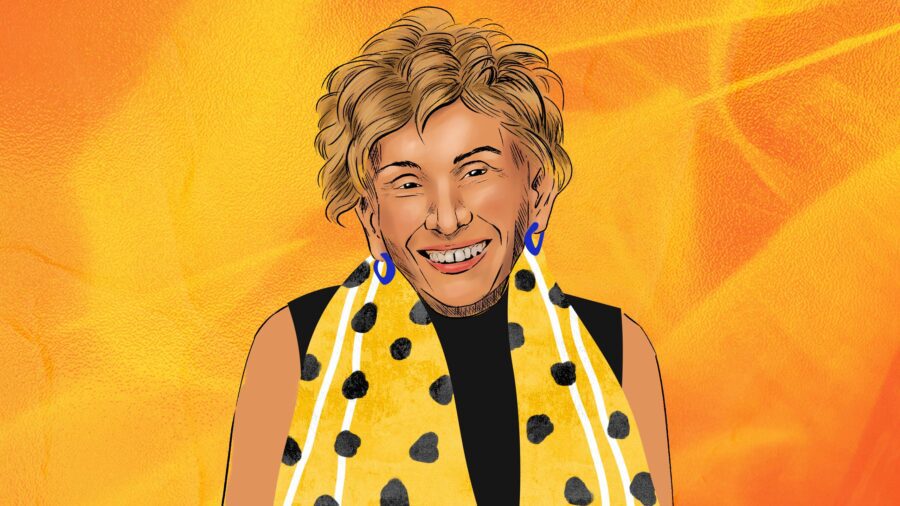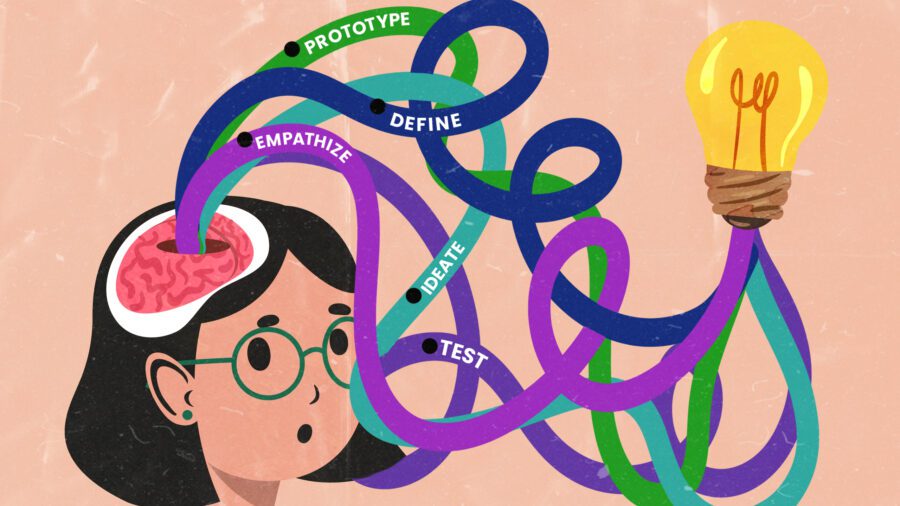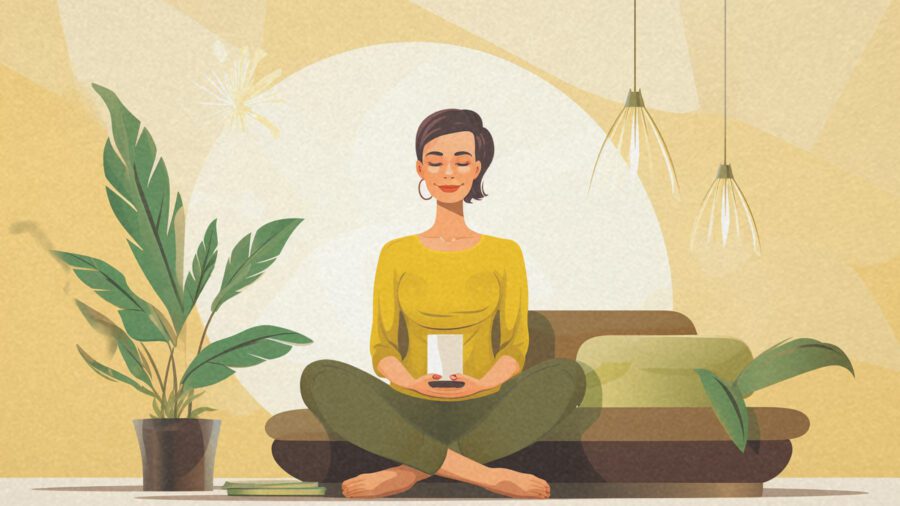
Redefining Poetry: How Instagram Sensation Rupi Kaur Showed That Poetry Is for Everyone
Poetry is one of the most beautiful forms of literature ever to be written. Shakespeare, Frost, Yeats, Dickenson, Angelou — all of them are poets that most of us have heard of or read the works of.
So how long has poetry been around? Poetry might be one of the oldest forms of writing that exists, with origins traced back to prehistoric times when hunters recounted their experiences in ancient Africa.
But that long history also makes poetry seem almost outdated in current times. William Shakespeare’s sonnets and use of iambic pentameter probably reminds most of us of high school English classes, struggling to make sense of a language that seemed all at once so familiar, yet so foreign. Slogging our way through works such as Othello, Hamlet, or Macbeth may have had us asking, “Why is poetry so difficult to study?”
Even more modern-era poets like Walt Whitman and Maya Angelou seem to be communicating in ways we might barely understand.
Poetry might seem like an ancient form of communication, but it is still very much a part of the modern world. The songs we stream through Spotify or Pandora are just poems set to music, really, and are nothing more than updated ballads of old.
Beyond the music that plays on our radio station or streaming service of choice, poetry is still very much alive and thriving, though. While the internet age may be reducing the importance of newspapers, magazines, and various other media, it has become a haven for the poets among us.
One of these modern-day bards is Rupi Kaur, who used her Instagram and Tumblr as platforms to share her poetry, as well as her other artistic endeavors. The work she shared went viral as it gained attention, inspiring others to follow the trail she had blazed and leading to a renaissance of poetry in this internet age.
But how did this movement begin, and how do we define poetry in the current day? Like all art forms, poetry is fueled by the experiences of its creator, and Rupi Kaur’s words are no different. As a child who had to move to a new country and having been raised in a religious culture, Rupi’s early life inspired the direction of her poetry.
Join In 500 Million+ On The Journey to Greatness
A Traditional Basis for Modern Art
Rupi Kaur was born in Punjab, India, in 1992, and her parents moved the family to Canada three years later.
Struggling financially following the move, the family lived in a small, one-bedroom apartment where Rupi, her parents, and her three younger siblings all shared one bed. Around a year later, they finally made a home in Brampton, Ontario, where they settled in a community of other South Asian people that had formed there.
Rupi’s father was often absent, as he was traveling frequently for work in an effort to support the family. During his time away, her father would send her mother Punjabi poetry that he’d written as a way to stay in touch. He had always had a passion for poetry, as it was an important part of the family’s Sikh faith — Sikhs sing their prayers as part of their religious practices, and these prayers often shared the characteristics of poetry.
“There were evenings when my dad would sit around, analyzing a single verse for hours.” – Rupi Kaur
As Rupi became more acclimated to Western culture growing up in Canada, it led to clashes with her parents. All adolescents reach a point where they are embarrassed by their parents, and she was no different, but what was different was her situation. Rupi found herself growing more distant from her mother, whose prominent Indian accent was a source of shame for the girl.
Rupi’s mother had long been a painter, which strained the relationship between the two. When young Rupi began to take up art as a hobby, her mother began forcing her to paint because of her own dedication to the craft.
The situation was made worse once Rupi reached her teenage years. Her mother’s traditional upbringing led her to avoid Rupi whenever she would menstruate each month. Clinging to these cultural trademarks and living in a community of similar traditionalists caused Rupi to experience and be witness to many acts of abuse.
Additionally, she saw racism directed at friends and family in the community from the native Canadians around them.
As if her tense home life wasn’t enough for young Rupi to deal with, school was also filled with problems for her. She was resistant to learning English at first, which hampered her communication skills. She was also a subject of bullying at the hands of other children because of her appearance, and she felt isolated.
These feelings prompted her to begin writing as an outlet.
Rupi Finds Her Voice
By 2009, Rupi had begun sharing her poetry in venues around Ontario in spoken word performances. As she progressed through school, she took to participating in various speech competitions and performances as her self-confidence grew.
The works she performed were rooted in her turbulent upbringing and further based on having just ended an abusive relationship. Both the subject matter and her impassioned recitations of Rupi’s poetry made audiences uncomfortable, leading to mild receptions and pointed critiques. She was turned away from quite a few venues, being told her work was too aggressive.
“I wanted to find a voice, because I had been voiceless for so long, [but] many people around me early on thought it was absolutely ridiculous.” – Rupi Kaur, on her early poetry.
In her high school years, she had been sharing her poems anonymously, and it was based on standard teenage fare like crushes she had, but she also wrote about political issues and levied criticism at the Canadian government. By her own admission, though, she was writing these political pieces from a place of ignorance.
As she progressed into studying at the University of Waterloo, Rupi’s work began taking on a more reflective, mature nature. Rupi started sharing her work online on Tumblr in 2013, finally forgoing using a pseudonym and putting her own name with her poetry. Her poems gained interest, but it was her next platform that led to her work taking off.
Rupi Makes a Shift to Instagram and Her Audience Grows
In 2014, Rupi left Tumblr behind and began sharing her writing on Instagram, where she accentuated it with illustrations she drew.
The change in platform steadily gained her more and more of a following. Her poems touched on subjects like life and death, female empowerment, and family trauma. Her first Instagram post was a poem about a wife coping with her husband’s alcoholism.
Her choice of subject matter was rooted in finding an outlet to cope with her own traumatic experiences growing up. Rupi used her poetry as a release valve for her pent-up feelings that she couldn’t share otherwise.
“I had this desire to unpack so many deeper emotions and issues that I’d seen affecting me and so many women around me. It is very cathartic [to write about her subjects].” – Rupi Kaur
As her Instagram audience grew, so did the ones coming to her performances. Rupi was performing in front of hundreds of people, whereas just a short time prior, she hadn’t even been allowed into venues because of the uncomfortable subjects she covered. But her newfound success gave rise to a new issue for the poet.
“Every time I’d do a show people would always come up to me afterwards and be like ‘Oh hey are you selling your book here? What’s going on? Can we pick up a copy?’ And I would always be like ‘Well there is no book.’” – Rupi Kaur
The constant requests she received at her shows prompted Rupi to try and figure out how to publish a book of her poetry. Since she was still studying at university at the time, she sought out advice from her creative writing professor on getting a book together. The professor told her to put together some of her best pieces and submit them to various outlets in hopes of getting them published.
Rupi fully anticipated being faced with rejection from some of the journals and magazines she sent her poems to, but quickly grew frustrated with the process even though she expected it.
“Reading five pieces doesn’t give you the full picture. I felt what I was doing was cheating on the body of work. These pieces need to stay together.” – Rupi Kaur
Not wanting to compromise her art, Rupi made the decision to look into self-publishing what would become her first book of poetry, Milk and Honey. The book was a collection of 180 poems that she considered one long piece, which is why she had been so resistant to breaking it into smaller parts and losing context.
After going to print, Milk and Honey achieved good sales for a self-published book, selling over ten thousand copies. Rupi’s Instagram following grew alongside the book’s success, drawing the attention of Andrews McMeel Publishing, who were interested in releasing Milk and Honey worldwide.
Since Andrews McMeel re-released it, Milk and Honey has gone on to sell over three million copies. The incredible success has led to follow-ups with The Sun and Her Flowers (2017), Home Body (2020), and Healing Through Words (2022). All told, Rupi’s books have sold over 11 million copies combined, making her one of the best-selling poets of all time.
The Power of Poetry and Inspiring an Online Renaissance
Rupi Kaur’s rise has spurred a comeback for poetry and driven many others to follow her path by using Instagram as the place to share their work. Since Milk and Honey was first published, poetry has become the fastest-selling category in book publishing.
Furthermore, most of those books in the poetry genre are being written by Insta-poets inspired by Rupi. They’re following her path, creating social media posts constructed around their verses and drawing eyes to them to build their audiences. These aren’t simply writers or artists, they’re entrepreneurs.
Poetry’s comeback goes even deeper, though. Readership has risen to levels not seen in decades and has even spurred sales of classic poetry works as well. The importance of poetry can’t be understated: It’s a beautiful expression of thoughts and emotions, simple yet complex, epic but charming.
Rupi joined Lewis Howes on an episode of the The School of Greatness Podcast to discuss the deep emotions that inspire her work and how important self-care is. Speaking of self-care, read our article, The 7 Best Ways to Cultivate Self-Care & Self-Love, to learn more about taking care of yourself better. If you’re inspired by Rupi’s artistic endeavors and want to pursue your own, we’ve got you covered here.
Don’t be afraid to express yourself and be great!
Greatness Authors
Greatness Authors is a collection of writers, thinkers, curiosity experts, and students of the world who are committed to bringing you the most up-to-date, impactful, and inspiring information surrounding Greatness topics.

The Young Professional’s Guide to Advocating for Yourself at Work & Setting Healthy Boundaries

Olympian Yusra Mardini’s Incredible Story of Resilience, Rescue, and Refugee Rights

A Beginner’s Guide to Effortlessly Attracting Money and Growth Opportunities

Psychologist Edith Eger’s Inspirational Journey to Find Forgiveness and What It Means for You

Design Thinking 101: The 5-Phase Process and Why It Matters for Your Professional Development










